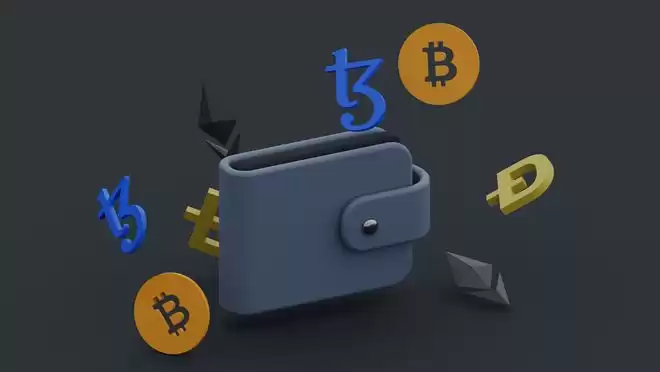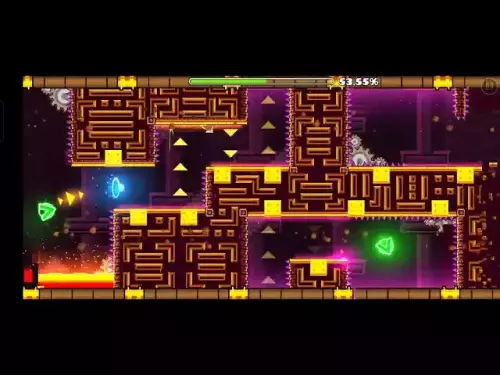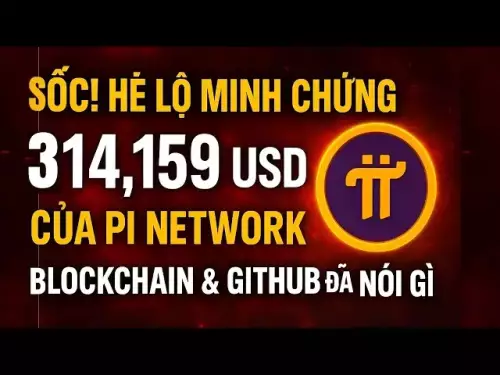-
 bitcoin
bitcoin $109547.008142 USD
0.04% -
 ethereum
ethereum $4011.838726 USD
-0.05% -
 tether
tether $1.000402 USD
-0.01% -
 xrp
xrp $2.798606 USD
0.88% -
 bnb
bnb $970.877944 USD
1.39% -
 solana
solana $202.237275 USD
-0.95% -
 usd-coin
usd-coin $0.999673 USD
0.00% -
 dogecoin
dogecoin $0.229294 USD
-1.15% -
 tron
tron $0.336370 USD
-0.45% -
 cardano
cardano $0.777260 USD
-1.66% -
 hyperliquid
hyperliquid $45.503019 USD
1.73% -
 ethena-usde
ethena-usde $1.000362 USD
0.01% -
 chainlink
chainlink $20.785303 USD
-1.10% -
 avalanche
avalanche $28.755822 USD
-0.11% -
 stellar
stellar $0.358303 USD
-0.48%
How do Web3 artists use wallets to sell NFT works?
Web3 artists leverage digital wallets to mint, list, and receive payments for their NFT artworks, while also benefiting from features like royalty management and collaboration support.
Oct 21, 2024 at 04:30 pm

Web3 artists have found a niche in utilizing digital wallets to facilitate the sale and distribution of their Non-Fungible Token (NFT) artworks. These wallets not only serve as storage devices for cryptocurrencies but also offer unique capabilities that enhance the NFT trading experience.
1. Custodial vs. Non-Custodial WalletsArtists can choose between custodial and non-custodial wallets. Custodial wallets are managed by a third party, providing convenience but also limiting control over funds. Non-custodial wallets, on the other hand, put users in full control of their private keys, ensuring maximum security but requiring greater technical proficiency.
2. Wallet Compatibility with NFT MarketplacesWhen selecting a wallet, artists need to consider compatibility with popular NFT marketplaces like OpenSea, Nifty Gateway, and SuperRare. Some wallets have built-in support for specific marketplaces, while others require additional integrations or plugins.
3. Minting and Listing NFTsTo create and sell NFT artworks, artists typically need to mint them using blockchain protocols like Ethereum or Polygon. Wallets often provide minting functionality, allowing artists to convert their digital files into unique digital tokens. Once minted, the NFTs can be listed on marketplaces for potential buyers to browse and purchase.
4. Receiving PaymentsWhen an NFT is sold, the proceeds are deposited into the artist's wallet. Artists can receive payments in cryptocurrencies like Ethers (ETH), USDC, or Solana (SOL), depending on the marketplace and wallet they use.
5. Managing Funds and WithdrawalsWallets allow artists to manage their NFT earnings securely. They can track their balances, view transaction history, and withdraw funds when needed. Withdrawals can be made to a linked bank account or exchanged for fiat currency through cryptocurrency exchanges.
6. Additional Features for ArtistsSome wallets offer additional features specifically designed for NFT artists, such as:
- Royalty Management: Automated tracking and distribution of royalties for artists on secondary NFT sales.
- Collaboration Support: Facilitating multi-artist collaboration by allowing multiple wallet users to manage and sign NFT transactions.
- IPFS Integration: Direct connection to InterPlanetary File System (IPFS) for storing and retrieving NFT artwork files.
Web3 artists have embraced digital wallets as essential tools for selling and managing their NFT artworks. By understanding the compatibility, security, and features of different wallets, artists can optimize their NFT trading experience and effectively showcase their creations to a global audience.
Disclaimer:info@kdj.com
The information provided is not trading advice. kdj.com does not assume any responsibility for any investments made based on the information provided in this article. Cryptocurrencies are highly volatile and it is highly recommended that you invest with caution after thorough research!
If you believe that the content used on this website infringes your copyright, please contact us immediately (info@kdj.com) and we will delete it promptly.
- Crypto Whales, PEPE, and Meme Coins: What's the Hype?
- 2025-09-28 18:25:15
- Polkadot pUSD: NYC's Take on Decentralized Stability
- 2025-09-28 18:25:15
- SWIFT, Ethereum, and Linea: Revolutionizing Global Banking?
- 2025-09-28 18:30:01
- Crypto, Altcoin, Buy Now: Navigating the 2025 Landscape
- 2025-09-28 18:30:01
- MoonBull, Crypto, and Shiba Inu: What's the Buzz in the Crypto Space?
- 2025-09-28 18:30:01
- Qurax Exchange Spot Trading and Token Listings: A New Era?
- 2025-09-28 18:30:12
Related knowledge

How do I view smart contract interaction history in Coinbase Wallet?
Sep 24,2025 at 01:36am
Accessing Smart Contract Interaction History in Coinbase Wallet1. Open the Coinbase Wallet application on your mobile device and log in using your cre...

How do I use the token swap feature in Coinbase Wallet?
Sep 24,2025 at 05:00pm
Understanding Token Swaps in Coinbase Wallet1. The token swap feature in Coinbase Wallet enables users to exchange one cryptocurrency for another dire...

How do I participate in governance voting in Coinbase Wallet?
Sep 25,2025 at 01:55pm
Understanding Market Volatility in the Crypto Space1. Cryptocurrency markets are known for their extreme price fluctuations, often driven by sentiment...

How do I set up a custom RPC node in Coinbase Wallet?
Sep 24,2025 at 12:00pm
Understanding Custom RPC Nodes in Coinbase Wallet1. A custom RPC (Remote Procedure Call) node allows users to connect their Coinbase Wallet to a block...

How do I manage multiple assets in Coinbase Wallet?
Sep 23,2025 at 10:00am
Understanding Multi-Asset Support in Coinbase Wallet1. Coinbase Wallet allows users to store a wide variety of digital assets beyond just Bitcoin and ...

How do I connect Coinbase Wallet to a hardware wallet?
Sep 26,2025 at 02:54am
Connecting Coinbase Wallet to a Hardware Device1. Open the Coinbase Wallet app on your mobile device and ensure it is updated to the latest version. N...

How do I view smart contract interaction history in Coinbase Wallet?
Sep 24,2025 at 01:36am
Accessing Smart Contract Interaction History in Coinbase Wallet1. Open the Coinbase Wallet application on your mobile device and log in using your cre...

How do I use the token swap feature in Coinbase Wallet?
Sep 24,2025 at 05:00pm
Understanding Token Swaps in Coinbase Wallet1. The token swap feature in Coinbase Wallet enables users to exchange one cryptocurrency for another dire...

How do I participate in governance voting in Coinbase Wallet?
Sep 25,2025 at 01:55pm
Understanding Market Volatility in the Crypto Space1. Cryptocurrency markets are known for their extreme price fluctuations, often driven by sentiment...

How do I set up a custom RPC node in Coinbase Wallet?
Sep 24,2025 at 12:00pm
Understanding Custom RPC Nodes in Coinbase Wallet1. A custom RPC (Remote Procedure Call) node allows users to connect their Coinbase Wallet to a block...

How do I manage multiple assets in Coinbase Wallet?
Sep 23,2025 at 10:00am
Understanding Multi-Asset Support in Coinbase Wallet1. Coinbase Wallet allows users to store a wide variety of digital assets beyond just Bitcoin and ...

How do I connect Coinbase Wallet to a hardware wallet?
Sep 26,2025 at 02:54am
Connecting Coinbase Wallet to a Hardware Device1. Open the Coinbase Wallet app on your mobile device and ensure it is updated to the latest version. N...
See all articles









































































